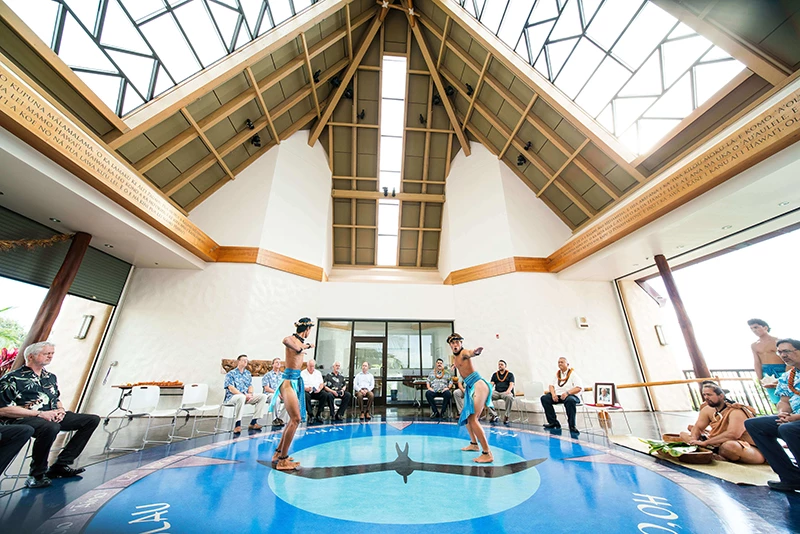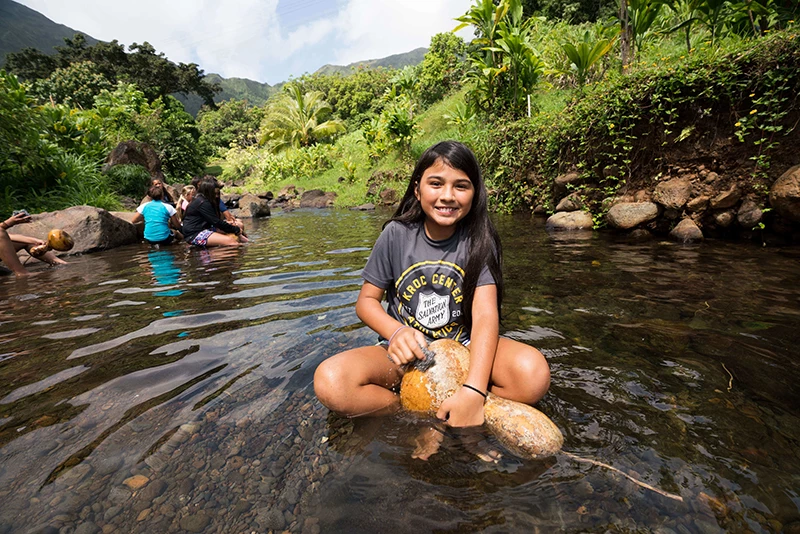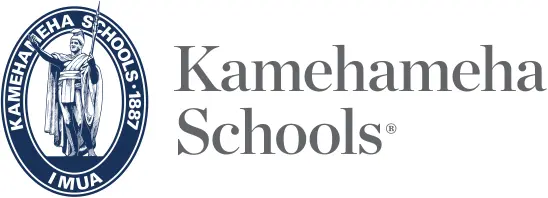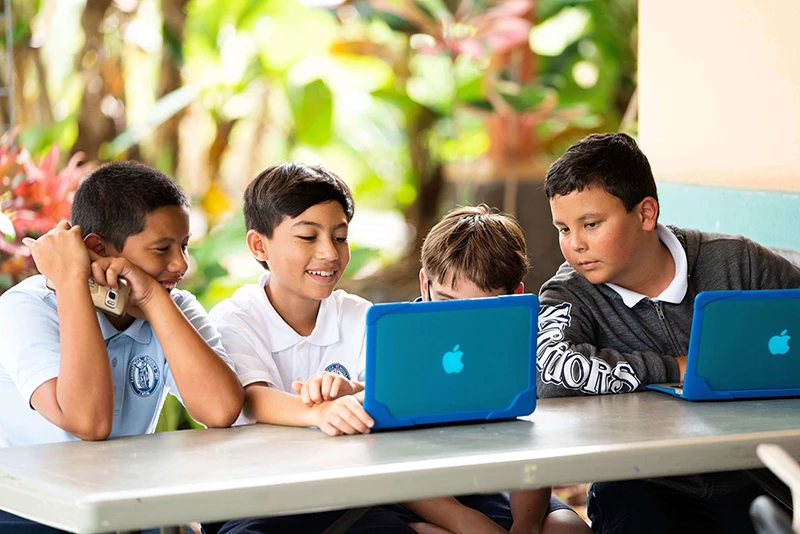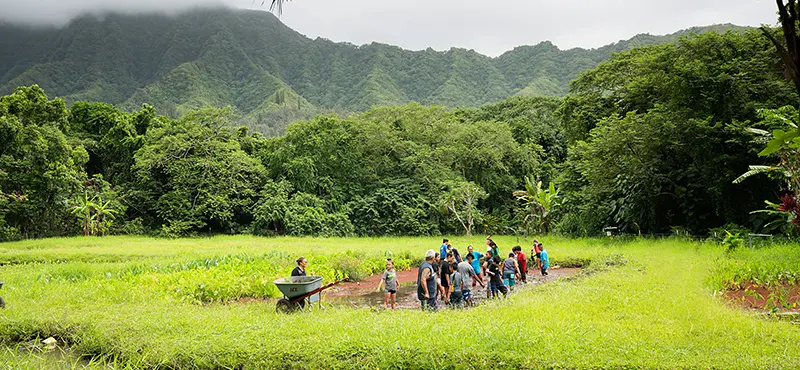If Hawaiʻi’s native plants could talk, Rick Barboza thinks we wouldn’t hear much.
“They wouldn’t say anything because there’s hardly any left,” Barboza said. “We as humans caused the extinction of a lot of them and they just don’t have enough voices out there for them.”
For Barboza, he takes that silence personally. As co-founder of Hui Kū Maoli Ola, he’s spent more than two decades restoring native landscapes across Hawaiʻi, from large-scale developments to neighborhood yards.
However, his journey didn’t start with plants but rather a deep love for Hawaiʻi. Growing up fishing with his dad, Barboza would get frustrated by the lack of nearshore iʻa to catch. Studying marine biology and eventually zoology in college, it was a spring break trip to Hakalau Forest National Wildlife Refuge that sparked his love for native birds.
“It blew me away just being able to be in the forest and seeing all of these birds, like why don’t we have that anymore?” Barboza recalled. “I almost wanted to have an aviary, but to me, the next best thing was to improve their habitat: native plants.”
That passion turned into a business in the early 2000s. Barboza and his friend Matt Kapalikū Schirman started collecting native plants, growing and sharing them at plant sales. Then one night, while working as a sushi chef in Waikīkī, Barboza met a customer who asked about his weekend hobby. That man turned out to be a Home Depot executive. When the home improvement chain opened in the islands, Barboza’s hui supplied its nurseries with lāʻau Hawaiʻi for the everyday shopper. Since then, his team has provided and serviced major commercial projects like the Amazon warehouse and Turtle Bay Resort.
Still, getting people to embrace native plants hasn’t always been easy.
“We all grew up with those plants that we thought were Hawaiian and I get it; they’re nice and pretty, smell great. But when people love those types of plants, that just shows that they have the potential to love native plants if they are given the right information and a chance to see them,” Barboza said.
Sometimes, customers resist, saying native plants look like weeds, especially when they want something more ornamental to surround their homes. But Barboza wants people to consider the bigger picture. Native plants play a critical role in supporting Hawaiʻi’s biodiversity, providing habitat for endangered species, reducing erosion and helping to recharge groundwater supplies.
To grow native species, he suggests residents hike near their homes to identify and observe the plants in their ahupuaʻa and mimic those conditions in their garden. Not only are you cultivating species that already thrive in your neighborhood, Barboza said, but you are also growing your connection to place and ʻāina.
“I can tell people what to grow based on where they live, but I think they have a much greater appreciation of seeing things in the wild, making that connection and matching nature,” Barboza said.
April is an ideal time to start, as many native plants are in bloom, and Hawaiʻi celebrates Native Hawaiian Plant Month. For Barboza and his team, it’s all about restoring balance. Their philosophy, “Transforming land back to ʻāina,” reflects the belief that even if some native plants aren’t edible for humans, they nourish the insects, birds and other lifeforms that sustain Hawaiʻi’s unique ecosystems.
“I would love for when people are asked what their favorite flowers are, they shift from the plumeria, pikake and pakalana to the peʻahi, palapala, ʻaʻaliʻi, ʻōhia and ʻilima,” Barboza said.
It’s a long journey, but Barboza is rooted in hope. Because if native plants could talk, he wants them to say more than just goodbye.
TAGS
ʻāina pauahi,
native hawaiian plant month,
stewardship,
aloha ʻāina,
mālama ‘āina,
heʻeia
CATEGORIES
Kaipuolono Article, Regions, Ko’olau, E Ola!, KS Announcements, Newsroom, Community Education, Community Events, Department News, CRED News (Not on Frontpage)
Print with photos
Print text only

